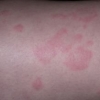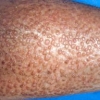Una risposta parasimpatica aberrante: nuova prospettiva che collega lo stress cronico e il prurito
 Lo stress percepito è noto da tempo per alterare l'equilibrio dinamico stabilito tra il sistema nervoso, endocrino e immunitario ed è ampiamente riconosciuto per attivare o aumentare il prurito.
Lo stress percepito è noto da tempo per alterare l'equilibrio dinamico stabilito tra il sistema nervoso, endocrino e immunitario ed è ampiamente riconosciuto per attivare o aumentare il prurito.
Tuttavia, non è ancora stato chiarito l'esatto meccanismo secondo cui questi principali sistemi di risposta allo stress, tra cui l'asse ipotalamo-ipofisi-surrene (HPA) e il sistema nervoso autonomo (SNA), inducono o aggravano il prurito cronico. Le regioni limbiche del cervello, come la corteccia prefrontale e l'ippocampo sono profondamente coinvolti nella regolazione della risposta allo stress e si intersecano con i circuiti che sono responsabili della memoria e della ricompensa. Secondo la "Teoria Polivagale", alcune strutture limbiche che servono come "equivalente più alto del sistema nervoso parasimpatico nel cervello" giocano un ruolo più importante nel mantenimento dell'omeostasi corporea attraverso il funzionamento come freno attivo del vago. Inoltre, è stato affermato che il sistema limbico regola due distinti aspetti del prurito, ancora correlati: (i) l'aspetto sensoriale discriminativo e (ii) l'aspetto affettivo-cognitivo. Si ipotizza che il prurito cronico indotto dallo stress possa essere causato da cambiamenti correlati allo stress stesso nella struttura limbica, con la conseguente ricalibrazione di entrambi i circuiti pruricettivi centrali e periferici. Qui passiamo in rassegna i dati che suggeriscono come una disfunzione del sistema nervoso parasimpatico, associata allo stress cronico, possa giocare un ruolo critico nel controllo regolatorio delle principali molecole, recettori e strutture cerebrali coinvolte nel prurito cronico.
Storia della pubblicazione:
Titolo: An Aberrant Parasympathetic Response: A New Perspective linking Chronic Stress and Itch
Rivista: Experimental Dermatology. doi: 10.1111/exd.12070
Autori: Hei Sung Kim, Gil Yosipovitch
Affiliazioni: Department of Dermatology, Incheon St. Mary's Hospital, The Catholic University of Korea, Incheon, Korea
Department of Dermatology, Wake Forest University Health Sciences, Winston-Salem, NC, USA
Abstract:
Perceived stress has long been known to alter the dynamic equilibrium established between the nervous, endocrine and immune system and is widely recognized to trigger or enhance pruritus. However, the exact mechanism of how the major stress response systems, such as the hypothalamus-pituitary adrenal (HPA) axis and the autonomic nervous system (ANS) induce or aggravate chronic itch has not been elucidated. The limbic regions of the brain such as the prefrontal cortex and hippocampus are deeply involved in the regulation of the stress response and intersect with circuits that are responsible for memory and reward. According to the "Polyvagal Theory", certain limbic structures that serve as a "higher brain equivalent of the parasympathetic nervous system" play a foremost role in maintaining body homeostasis by functioning as an active vagal brake. In addition, the limbic system has been postulated to regulate two distinct, yet related aspects of itch: (i) the sensory discriminative aspect and (ii) the affective-cognitive aspect. Chronic stress-induced itch is hypothesized to be caused by stress-related changes in limbic structure with subsequent rewiring of both the peripheral and central pruriceptive circuits. Herein we review data suggesting that a dysfunctional parasympathetic nervous system associated with chronic stress, may play a critical role in the regulatory control of key candidate molecules, receptors and brain structures involved in chronic itch.
https://www.youtube.com/@djfdm





